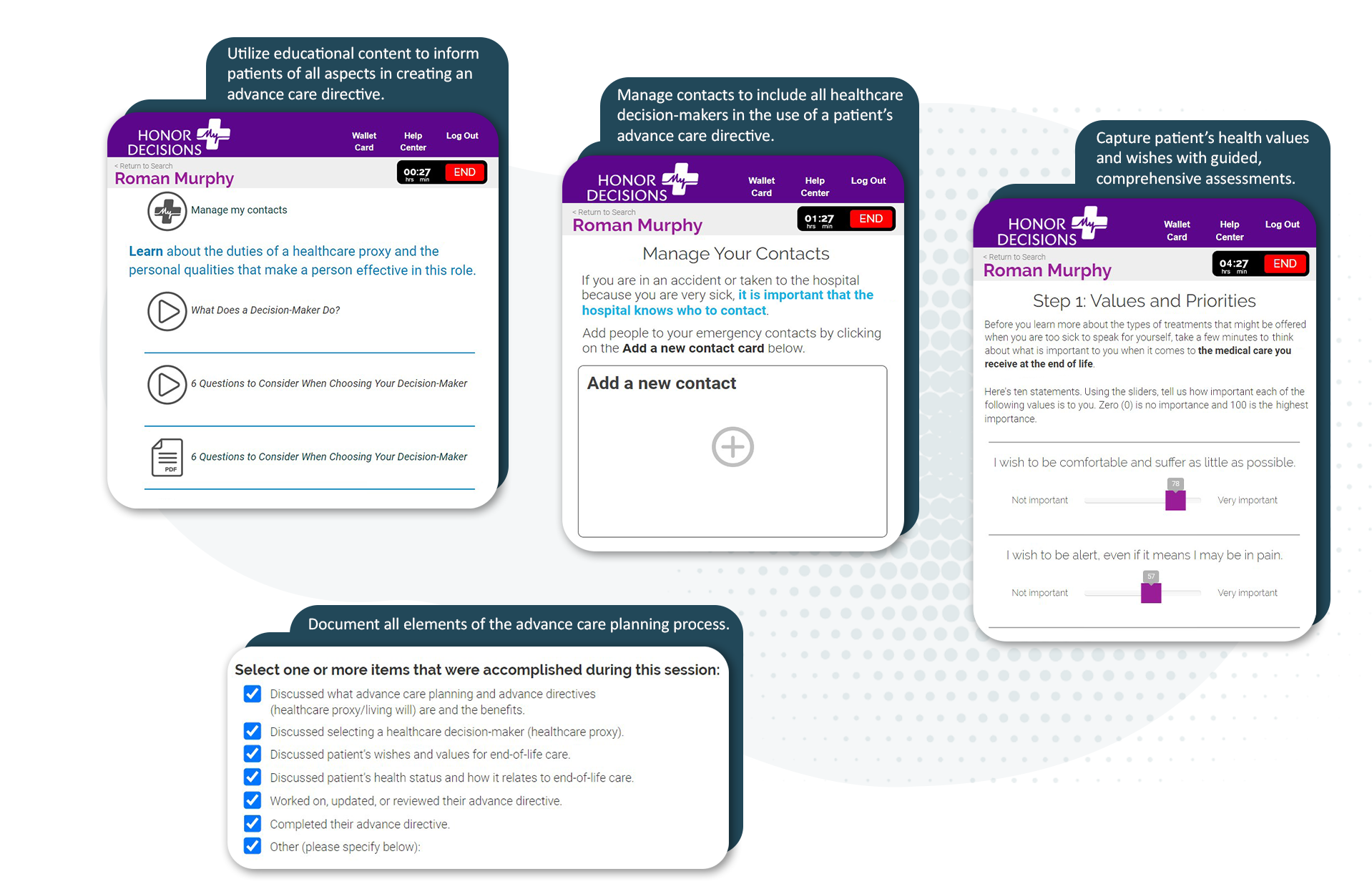Why Digital Access to Advance Care Planning Documents Matters
Studies show that nearly 75% of people will need help making medical decisions. Less than 25% have formally documented their end-of-life care wishes.
Provider organizations, through Medicare reimbursement for Advance Care Planning (ACP) services, are working to change these statistics. Their goal is to help patients prepare for future medical decision-making in case they are seriously ill or unable to communicate their preferences.
However, having the care planning discussion and documenting a patient’s wishes through a Living Will and a durable Healthcare Power of Attorney (HCPOA) are ineffective if key people aren’t aware that they exist, and the documents can’t be easily accessed.
What happens if ACP documents are inaccessible?
When do patients and their families need ACP documents available? One never knows. That’s why having a Living Will and Durable Healthcare Power of Attorney in digital form is critical.
The Living Will outlines specific desires regarding the use of life-sustaining therapies and other medical treatments in the event of incapacity or terminal illness. The Durable Healthcare Power of Attorney assigns a surrogate, or proxy, who can make treatment decisions on behalf of the patient.
Without knowledge of, or access to, a patient’s ACP documents or their designated proxy, state laws would determine who may make medical decisions for a patient. This typically implies a spouse, parents, or adult children.
However, authorities may assign a physician to represent the patient’s best interests if no one has been designated.
For patients and providers who go to the effort to create an Advance Directive, including a Living Will and HCPOA, ensuring access 24/7 is the best way to assure that a patient’s wishes are honored.
Three steps to ensure a patient’s wishes are honored
There are three steps to completing the Advance Care Planning process, and the last two are often left to chance. These steps include:
- Preparation - Create Advance Directive documents and select a surrogate decision-maker
- Awareness - Sharing ACP documents and preferences with key friends, family, and healthcare professionals
- Accessibility - Ensuring that ACP documents are recorded and digitally accessible
ThoroughCare enables multiple ways the Living Will and HCPOA can be digitally accessible between all critical personal and professional contacts.
1. Preparation - Creating ACP documents
Advance Care Planning includes engaging patients and discussing what ACP is. Initial discussion should:
- Address ACP’s value to the patient and their family,
- Help identify the patient's values and medical care priorities
- Document those wishes in Advance Directive documents, including a Living Will and HCPOA
ThoroughCare guides clinicians through each step of this process, including education and engagement, creating documentation for all 50 states, and meeting ACP billing requirements.
Patients can even create a video living will to express their desires in their own words.
2. Awareness - Sharing documents and preferences
Once the Advance Directive is created, it needs to be shared not only with the surrogate medical decision-maker (aka healthcare proxy), but also with key healthcare providers, hospitals, and health systems, as well as other personal contacts who should be aware of the patient’s choices.
ThoroughCare makes sharing ACP documents seamless. The platform captures emergency contact information that can be used to email and alert family and friends of the patient’s care preferences and who has been selected as their proxy and backup decision-maker.
Additionally, ThoroughCare supports comprehensive integration with leading EHRs, health information exchanges, and remote devices to coordinate care across preventive health programs.
This level of interoperability, along with informing preferred physicians and hospitals of the patient’s new Advance Directive, builds awareness that legal documents have been created and should be stored in the Electronic Medical Record.
3. Accessibility — Ensuring key people and institutions have access to ACP documents
Lastly, ACP documents must be available at the time they’re needed. Digital forms of ACP documents make sharing more manageable and accessible than carrying copies.

The patient’s advance directive can be accessed 24/7 via three methods:
- By scanning the QR code on a provided patient wallet card
- Clicking a link in the patient’s electronic health record
- Via an email link shared with individuals identified by the plan owner
Easy access to care plan documents across care team members, the patient, the patient’s family, or power of attorney, is the critical final step toward ensuring a patient’s medical preferences are honored.
ThoroughCare supports seamless access to digital Advance Care Planning documents
Creating an Advance Directive and selecting a surrogate decision-maker is a critical first step.
Choosing a care management platform that goes beyond creating legal documents, builds awareness, and supports access when needed most, is invaluable.




